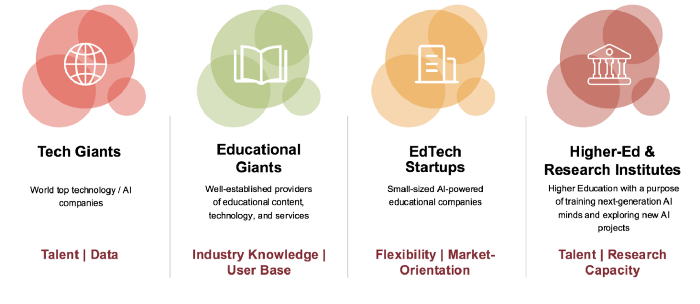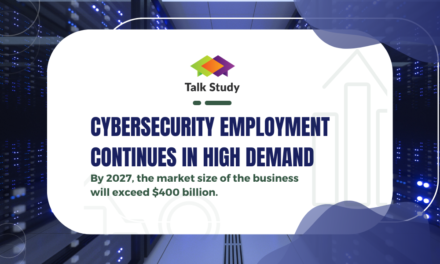AI (Artificial Intelligence) is the fastest growing and most transformative advanced technology in 2019. Andrew Ng put it this way: “AI is the new electricity.” Just like the way electricity had powered every aspect of human activities a century ago, AI will only bring a broader and more profound transformation during our time. A 2017 McKinsey report also projected that in about 60% of occupations, at least one-third of the constituting activities could be automated by technology, implying substantial workplace and societal transformations. In the realm of education, the adoption of AI is also accelerating. According to HolonIQ, a global education intelligence think tank, AI adoption in education is expected to reach a global expenditure of $6 billion by 2025.
While we are being amazed by the speed of AI advancement and its adoption in education, we should also be aware of a hugely under-representation of systematic, trusted and data-driven research and reports on the latest trend. Who are the active players behind AI in education? Which trajectories have they embarked on? Where do we stand as an industry? And where do potential obstacles lie? If you are curious about these questions, then you’ve come to the right place. In this blog article, we will tackle only one aspect of these questions: who are the active participants of AI education, and we will answer this question from two perspectives: how different industries are positively affecting AI, and what countries are leveraging AI the most.
Firstly, what are the participants driving the momentum of AI Education?
The power behind AI in education can be categorized into four sources:
1) tech giants,
2) educational giants,
3) EdTech startups, and
4) Higher-Ed & research institutes.
Each driver comes with its advantages and resources, pushing the adoption of AI in education from different aspects and in various domains. The following table summarizes these four engines, with a highlight of their advantages.

1. Tech giants
Here, we are referring to mainly the world’s top technology companies, such as Google, Microsoft, Apple, IBM, and Baidu (China). Powered by a massive amount of data, as well as top talents in data science and Machine Learning, tech giants are eager to explore the possibilities of AI for educational means. Google AI Education hosts a library of AI models and experiments and provides guides, training materials, and courses for both newbies and seasoned minds. Microsoft AI School also offers similar trails and learning paths for those interested in pursuing AI for education or career. Apple Education and IBM Watson Education are another two examples that the tech giants are experimenting with approaches to engaging students and improving learning outcomes with AI technology.
Additionally, the list of leading technology companies also encompasses several newly emerged AI companies. The worth-mentioning ones include Sensetime, iFlyTek, and AIBrain. Such AI companies are also spreading their business to the area of education, either by exploring innovative K12 educational strategies or by opening AI universities to produce new talents.
When the tech/AI giants are testing the waters of education, they might not be looking at a viable educational product that brings in revenue or customers right away but would like to invest their research capacities for a longer-term outcome. They are surely not experts in the educational field, but their talents in AI and leading position in technology opens many doors in testing the unknown and expanding businesses.
2. Educational giants
Another active player in AI education is what we call “educational giants.” They are the well-established providers of educational content, technology (such as software or platform), and services (such as publishing or professional development). Some familiar names include Cengage, McGraw Hill, Education Elements, and Pearson. Currently, those educational giants are amid transform from educational services powerhouses to digitized platforms, with examples like Pearson’s new AI department, Knewton’s alta, and Duolingo’s new AI research group.
Compared with the big names in technology/AI, the educational giants are not specialized in technology. Their traditional business might be in an AI-unrelated field, but many years of experience in education has brought them a robust user base and in-depth industry knowledge when expanding to new territories.
3. EdTech startups
On top of the traditional educational service providers, the industry has also witnessed numerous EdTech startups springing up, innovating AI education solutions. Compared with conventional educational companies, those newer and smaller participants might not necessarily enjoy substantial and secured funding, well-established positions in the industry, or a large pool of talents. However, they are comparatively more market-oriented, more willing to try out new technology ideas, and more flexible in bringing them to students/teachers.

Some countries or regions are home to more of these startups because of more advanced AI technology, more welcoming startup culture, or more mature education systems, with Europe, North America, and East Asia as examples. Their approaches span across a broad range, including but not limited to adaptive learning systems, intelligent grading of various question types, smart robots, teaching AI to young learners, etc. Due to its heaviness, it takes some additional blog articles to fully unfold the subject of AI education startups, and the regions and countries that are bustling in AI education.
We will mention some of the names here: Alef from the UAE, Cognii from the USA, Squirrel AI and Liulishuo from China— these are some successful stories that repeatedly surfaced under the spotlight in recent years.
At Alef, we are proud to provide an AI-powered educational solution to schools, teachers, and guardians. With Alef, students learn at their own pace with personalized multimedia content, and teachers provide adaptive instructions and AI-recommended interventions with the support of student analytics and real-time data. With the combined concepts of technology, AI, personalized learning approach, Alef envisions a digital educational transformation within the K12 sector across the UAE and globally.
4. Higher education and research institutes
Higher-Ed and research institutes take an active part in bridging the skills gap in a society and training the next generation of scientists, faculty, and business leaders in Artificial Intelligence.
In 2018, MIT announced a particularly ambitious initiative: an investment of $1 billion, it will plan a new AI college to prepare AI talents for the future. Harvard Kennedy School incubated the AI Initiative in 2015 to assemble researchers, students, faculty, and experts to dedicate to the rise of Artificial Intelligence. Similar institutes include Alan Turing Institute (UK), The International Artificial Intelligence in Education Society (IAIED) (UK) and Oxford Artificial Intelligence Society (UK).
Compared with industries, Higher education and research institutes are championed by top talents in AI and favorable research funding. Their goals are not to create an AI-powered software or application to achieve business revenues, but to train talents and upskill society.

Related Blogs:
- Environmental Engineering: Education, Career and Impacts
- The lure of an overseas education
- Top 9 Countries With the Highest Investments in University Education
Second, which regions are active in harnessing AI technology in education?
We have talked about the participants of AI education, and in a geographical sense, what are the active regions behind the fervent AI education trend? If we have to draw out those players on a world map, which countries would be lit up?
Though countries around the world have ambitious plans for AI to innovate education, for AI education to flourish, it takes at least two fundamental conditions. One, the advancement of AI technology, powered by top AI engineers and favorable government policies, which allows the infiltration of AI into the educational field. Two, robust and relatively mature educational system, which guarantees quality public school education and allows new ideas to emerge in up-and-coming fields.
Here, we would like to briefly mention three central regions where the most number of AI education companies are identified: North America, Asia Pacific, and Europe. Each region comes with its focus and characteristics when adopting AI in education.
1. North America
In general, EdTech in North America is led by the USA and Canada, and so is AI education. For years, America has been a global leader in cutting-edge technology, and keeps its leading position in terms of AI, mostly due to its research powers and its vast talent pool.
Both the US and Canada have a relatively mature educational system where the private school and EdTech companies supplement their public school system, which creates substantial room for innovation. Due to the flexibility that the private and charter schools enjoy, we have witnessed AI education products (mostly personalized learning products) replacing the traditional classroom teaching altogether. We have also discovered the AI education means as supplementary tools for out-of-school learning or teacher support, like language learning, student evaluation, classroom management, etc.
2. Asia Pacific
In the past five years, China has attracted tremendous attention as an emerging major player in both education and AI technology. China is not only a large educational market with the sheer number of students and mature and favorable educational ecosystem, but also a dark horse leaping forward with AI. A competitive entrepreneurial system, robust governmental support, and accessibility of big data have led a full-speed advance. Similar things can be said about India, Singapore, and South Korea, which are also at the helm of innovation, with AI education breakthroughs like Embibe (India) and Riiid (South Korea).
In these Asian countries, the public school system is more intact compared with the western world and college entrance exams (for example, Chinese Gaokao) dominate. Under such circumstances, it is hard for an educational solution (adaptive learning platforms, for instance) to replace public school as the primary means of education. Most Asian EdTech companies innovate either to complement public school education as test-prep and skill enhancement for particular subjects (reading, STEM, programming, etc.) or to provide adaptive learning opportunities in the out-of-school environment.

3. Europe
In Europe, the UK takes a prominent leadership position thanks to its technological power, along with other participants like Germany, Sweden, and Finland. For AI education companies in this region, personalized learning is also a trend frequently pursued, with companies like Sana Labs (Sweden) and Adaptemy (Ireland) leading the way.
Other than personalized learning, countries like Finland, Denmark also features a cross-disciplinary approach to education and a more substantial focus on social-emotional learning, playful learning, and 21st-century skills, compared with the typical Asian educational companies. However, it seems that few companies have actualized AI applications in these domains.
Summary
In this article, we examined the various participants in AI education, both in the sense of participating industries and organizations, and countries and regions. There is a growing realization globally that AI is driving breakthroughs in education, and will keep doing so in years to come.
How is your company/school’s adoption of AI like? Are there any companies/institutes in AI education that caught your attention? Share your experience with the community by commenting below.
Written by Diana (Fangyuan) Yin
The content was found at https://medium.com/alef-education/ai-in-education-who-are-the-participants-465d4b46f59b






Recent Comments